I have a confession: I’m a dollar store junkie. I especially love going to the dollar store to get my car camping fix.
If you’ve ever wandered the aisles of your local 99¢ Only (or in some states, there’s the absolutely fantastic Japanese 100-yen store called Daiso—which, silly as it sounds, is actually the $1.50 store once you convert the currency), you might be overwhelmed by all the cheap and practical car camping goods you can buy, especially for cooking in camp.
I always stock up on dish rags, scrubby sponges, plastic tablecloths, aluminum pans, aluminum foil, food containers, and zip-top bags on my dollar store sprees. I also replace utensils (especially grilling utensils) that get lost or left behind at campgrounds and cabins.
You know what else the dollar store is good for?
Cheap seed starting supplies.
While I always encourage repurposing and reusing containers you already have around the house, sometimes you need to buy a few things to round out your collection, and the dollar store is a great way to get started with minimal expense.
Anyone who says seed starting is an expensive endeavor should look beyond the traditional garden centers and nurseries, and even beyond the gardening aisle of their local dollar store.
Strange as it sounds, the best seed starting supplies are actually found in the non-gardening aisles, and they can save you a lot of money, especially if you just want to try things out.
But before I go into what you should buy, I’ll explain what you should never buy from the dollar store, no matter how tempting the deal may be.
Disclosure: If you shop from my article or make a purchase through one of my links, I may receive commissions on some of the products I recommend.
What NOT to buy at the dollar store
Don’t buy: Seeds or soil
First, never buy seeds or soil—those are two things worth splurging for from a reputable seed catalog or supplier.
You never truly know the origin of the seeds and soil you find at the dollar store, whether they’re actually organic or even contaminated, how the seeds have been stored and what kind of germination rate to expect. (Sometimes it’s zero, and by the time you realize your seeds won’t sprout, you’ve already lost a couple of weeks.)
Seeds and soil are the foundation of your whole garden, so it pays to know your sources.
Don’t buy: Gardening gloves (unless they’re your throwaway pair)
Second, don’t bother buying gardening gloves from the dollar store. I’ve worn through countless pairs of cheap gloves, sometimes several a season, and in the end it just makes more sense to invest in a good, sturdy pair that will last a long time.
(I’ve been using these same gloves for years and love them. The gauntlet version is also great for really getting into the weeds and prickly bushes. If you want more options, check out my reviews of the best gardening gloves.)
In a pinch the cheapies will work, but think of them as disposables so you won’t be disappointed when you blow a hole through the fingers.
I also rarely wear gloves for everyday gardening tasks, and never when I’m seed starting.
I like the feeling of soil between my hands—not to mention the smell of fresh earth—and my gloves only go on for heavy weeding, lifting, picking, or shoveling.
Don’t buy: Gardening hand tools (unless they’re for your kids)
Along the same lines, don’t buy pruners, trowels, or other essential gardening tools because they seem like such a good bargain.
They’re not as sharp or durable as heftier tools from reliable brands, and you’ll end up replacing them sooner than you think.
There is nothing more frustrating than a tool that doesn’t perform or breaks in the middle of a job—I’ve been there.
(Though to be fair, I do have a dollar-store trowel that’s been with me for a few years, but only because it’s a backup that gets used once a year to stir up soft, fluffy potting soil.)
My recommended tools for getting the job done right:
- The Best Hedge Trimmers for Your Garden
- Best Pruning Shears—Reviews and Buyer’s Guide
- Best Oscillating Sprinklers
- Best Flexible Garden Hoses
- Best Garden Hose Nozzles
- These Are the Best Soaker Hoses
- Best Grow Bags for Your Garden
That said, here are the things you should buy from the dollar store, and with proper care and storage, those cheap seed starting supplies can last several seasons.
Cheap seed starting supplies worth buying from the dollar store
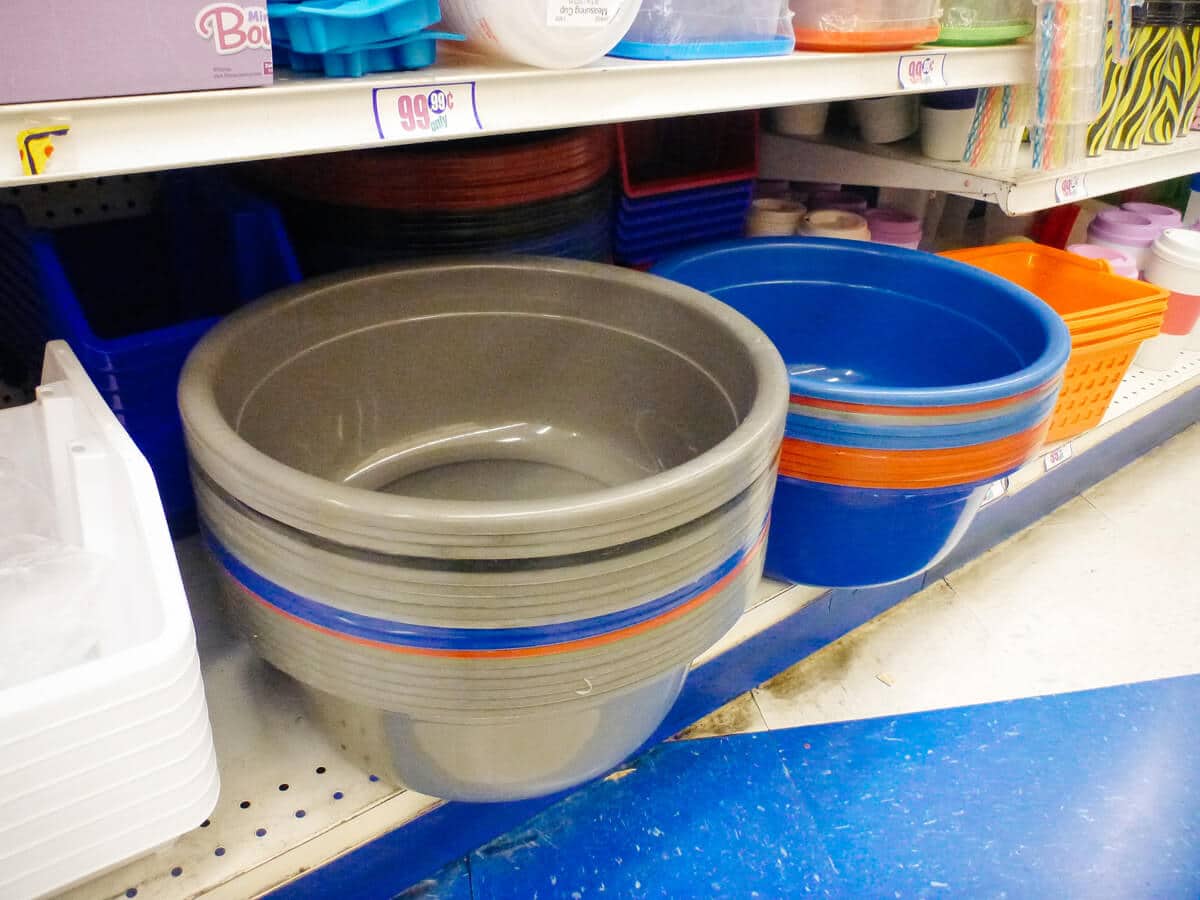
Dollar store deal: Wash tub
This multipurpose tub works well for mixing soil and amendments (especially if you’re making your own potting mix), moving compost, bottom-watering small pots, and hauling supplies to and from your potting bench.
Together with a roll of plastic cling wrap (just cover the top and poke a few holes in the plastic), you can make a mini greenhouse for starting seeds in a warm environment without the need for heating mats.
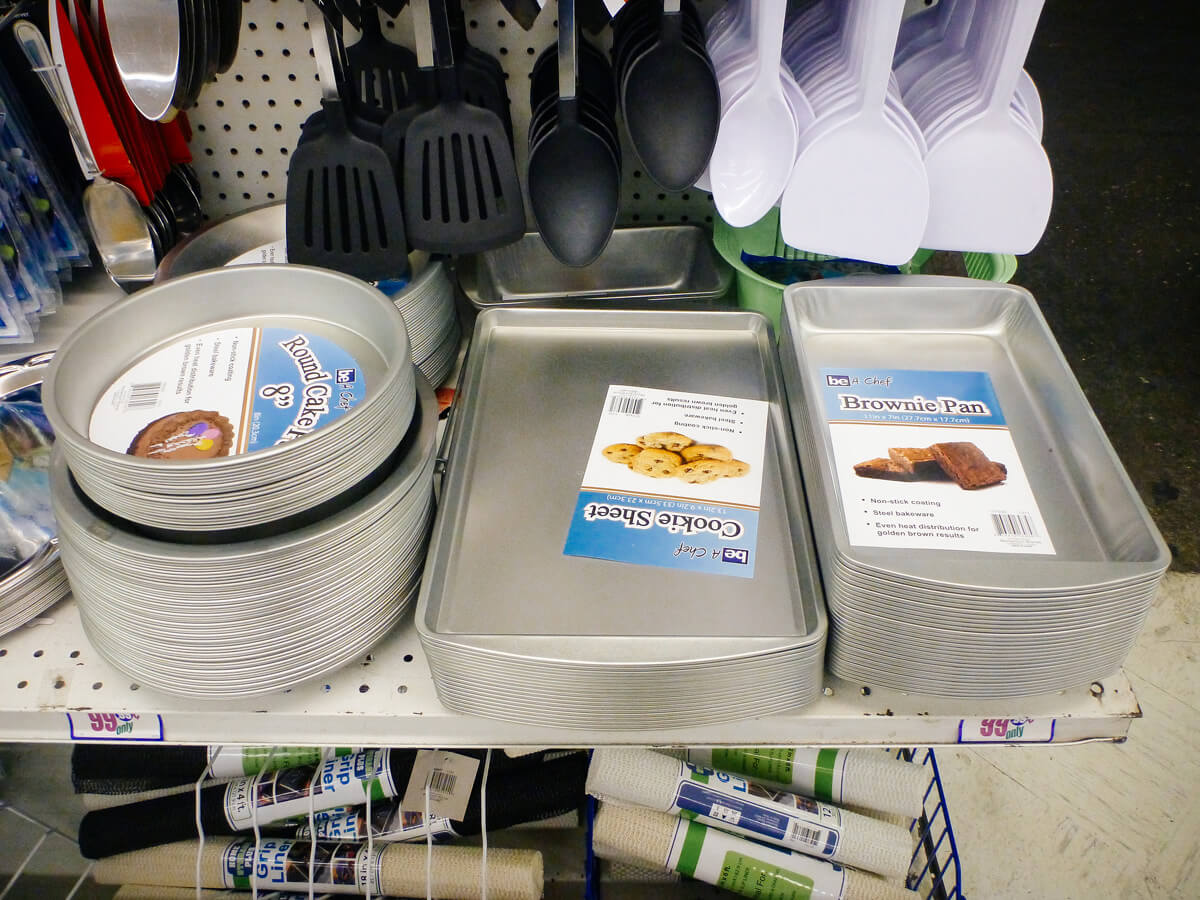
Dollar store deal: Cookie sheet or baking pan
These things are so versatile. They make great drip trays for starter plugs, seedling flats, planter boxes, or lots of little pots.
When you’re ready to harden off your seedlings, cookie sheets make it easy to transport all the containers in and out of the house.
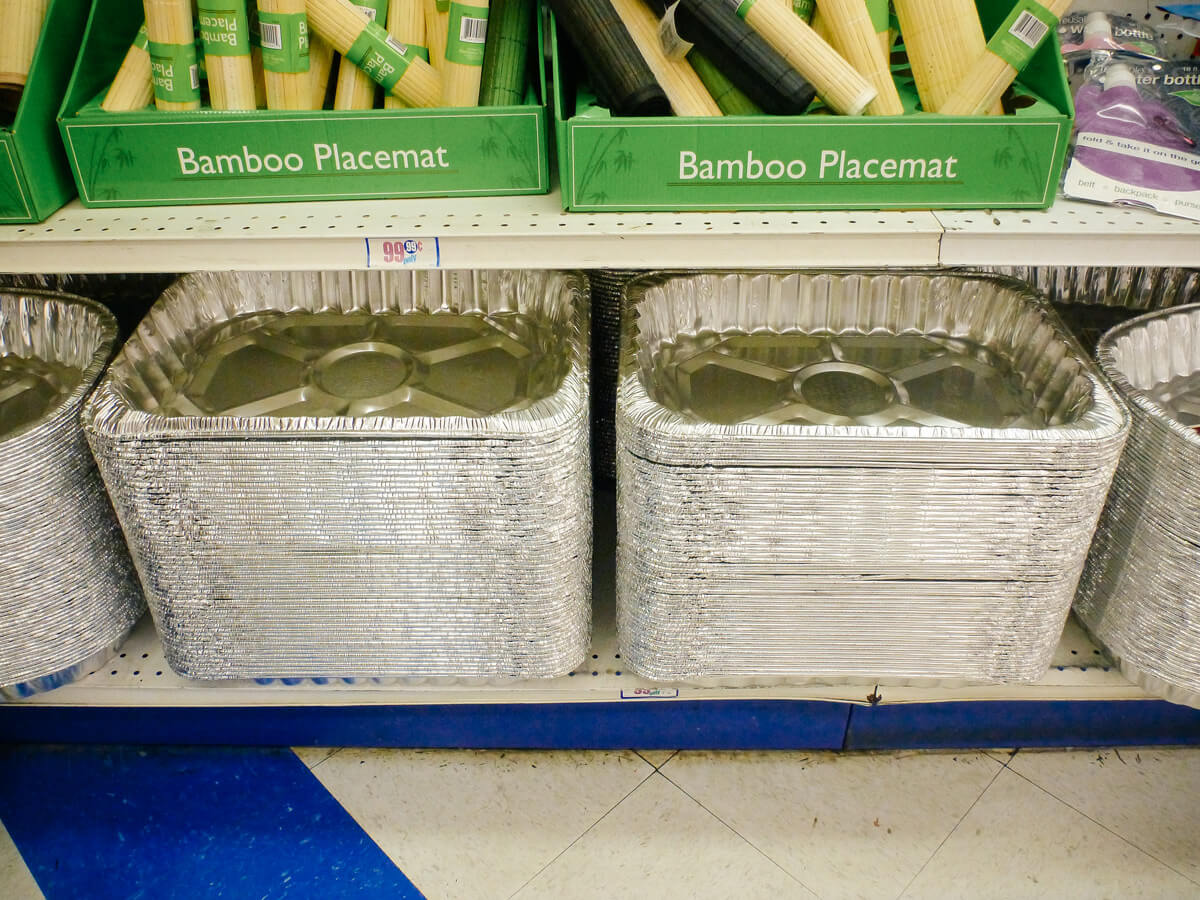
Dollar store deal: Aluminum pan
Similar to the cookie sheet above, but not really sturdy enough if you plan to move your seedlings around.
On the upside, these aluminum pans are huge and work well as drip trays for lots of different pots.
If I need to repot seedlings, I usually have a row of these lined up on the table like so: two or three aluminum pans for holding all the seedlings, one filled with potting soil, and another for the actual potting task.
You can also poke some holes in the bottom of these pans (for drainage), fill them with seed starting mix, and use them to sprout your seeds.

Dollar store deal: Rubber doormat
To protect your indoor surfaces from drips and spills, a thin, rubber-backed mat that you can hose off is a practical solution.
You can also use them as a cheap landing pad for muddy shoes before or after you walk in the door.
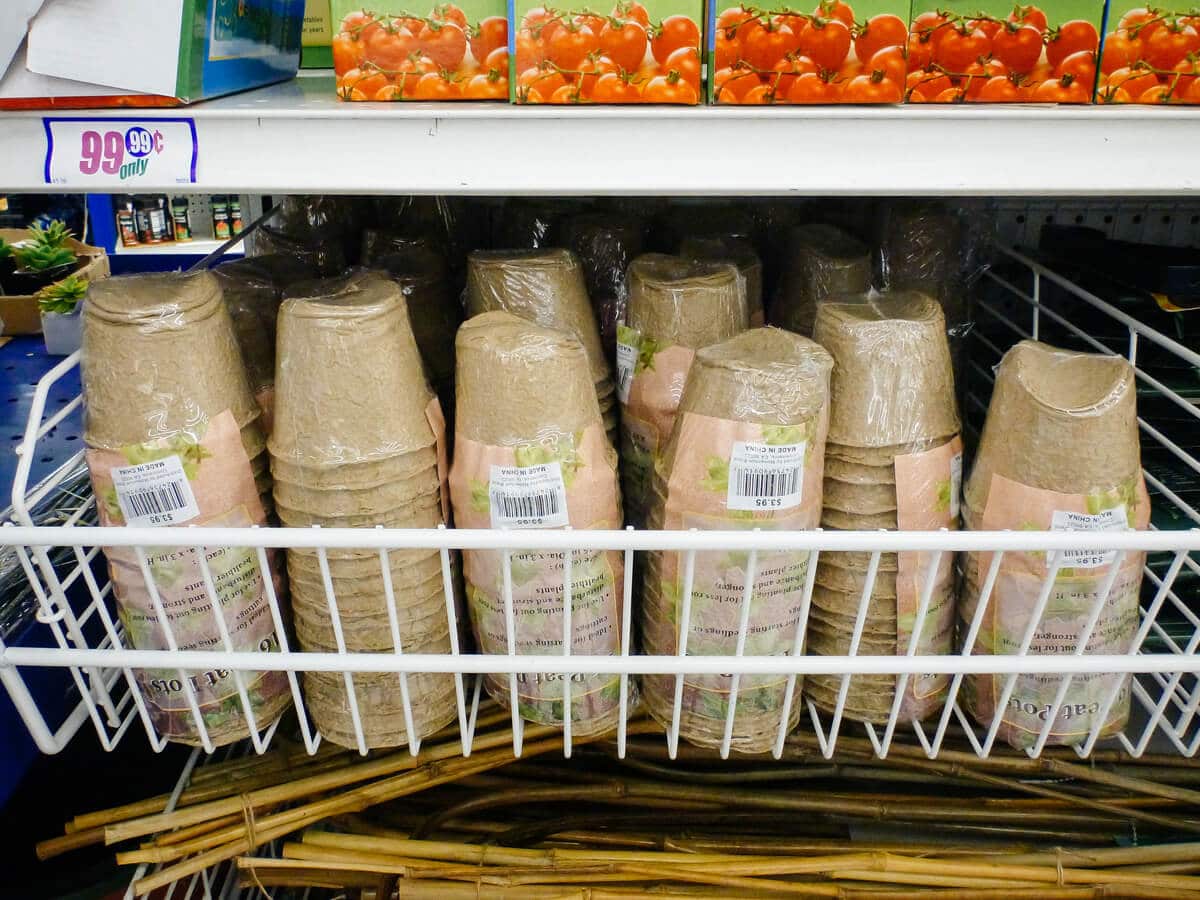
Dollar store deal: Paper pots
I’m a fan of these paper pots when I don’t have the time to make newspaper pots at home.
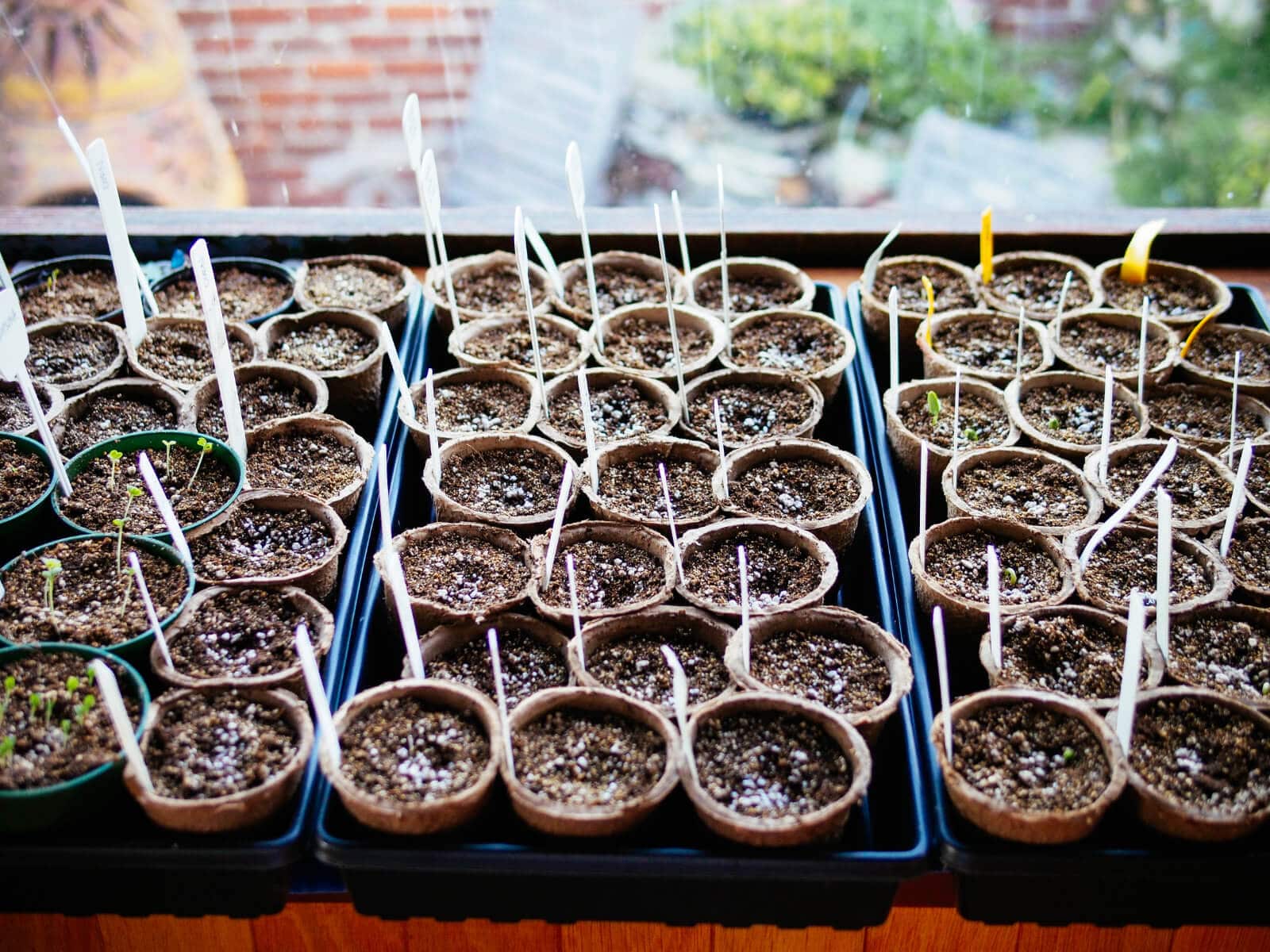
They last just long enough until my seedlings are ready to be transplanted (usually a month or so) and I can plant them right in the ground with my seedlings or simply add the paper pots to the compost pile.
I usually keep a couple of packages around as back-up containers when I run out of reusable plastic pots.
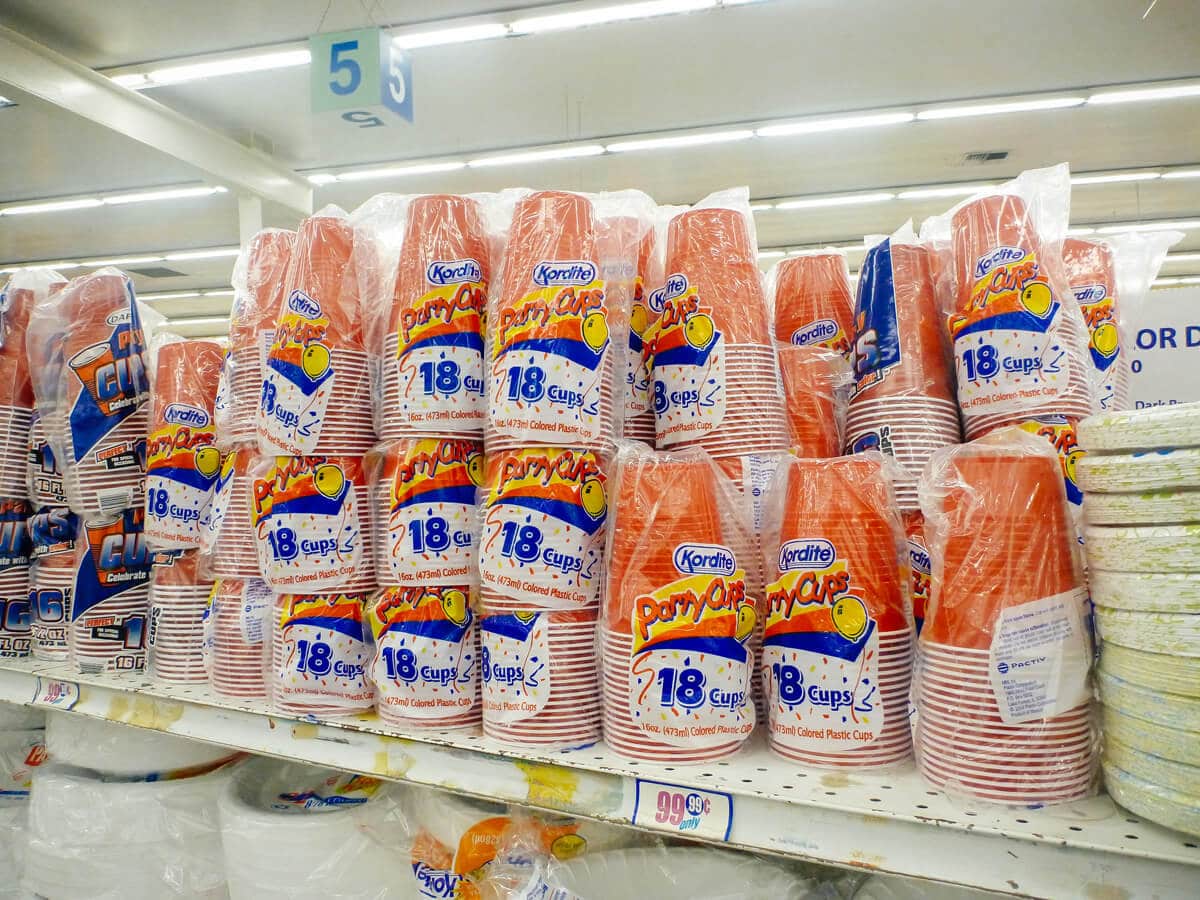
Dollar store deal: Plastic party cups
Poke some holes in the bottoms of these plastic cups with a nail, and you’ve got instant seed starting pots you can reuse for a season or two.
They’re also a good choice for potting up excess seedlings, starter plants, cuttings, and divisions you want to gift to friends.

Dollar store deal: Spray bottle
For seed starting, I always use a spray bottle to moisten the soil without unearthing the seeds.
They might seem flimsy at first, but I’ve had good luck with my dollar-store spray bottles. I think they’re able to last a few seasons because they’re only used for a short time and then stored away.
You can also use them for mixing up a small batch of DIY insecticidal soap.

Dollar store deal: Watering can
When your seedlings have moved into larger pots, you can start watering them with a regular watering can.
I like to keep a few of these around the yard so I never have to go searching for one if I need to top off a container. Dollar stores are also good places to find smaller watering cans if you have kids that like to help in the garden.
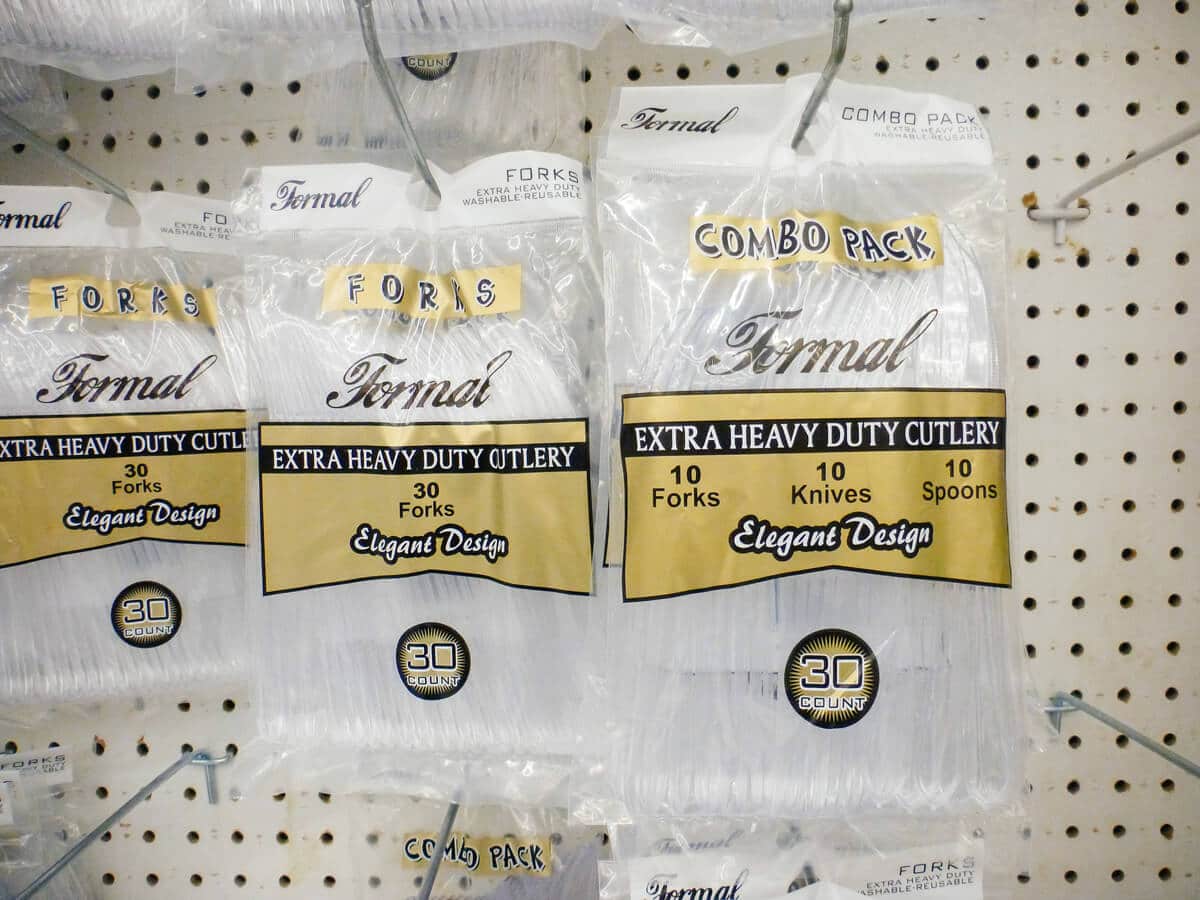
Dollar store deal: Plastic utensils for plant markers
A cheap and easy way to label a whole season’s worth of plants. I like to write on the blades of plastic knives (which typically have a wider surface) and then stick them in the soil.
(One thing I’ll mention, as I get a lot of questions about this, is you should avoid using plastic forks as a cat deterrent. There are many other ways to keep cats out of your garden that aren’t such an eyesore.)
If you can find them, wooden craft sticks are also handy for marking seedlings in the short term, but they’ll eventually mold or rot.
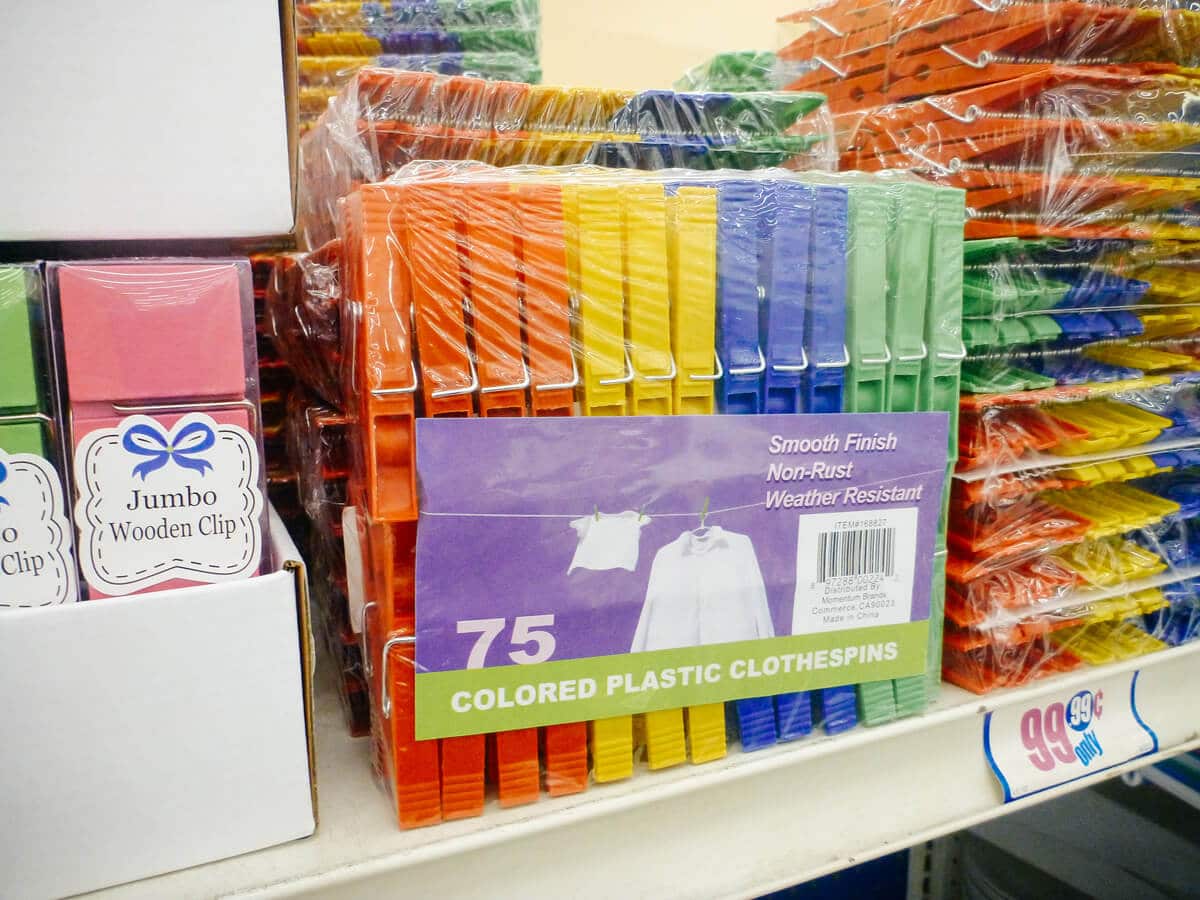
Dollar store deal: Clothespins
Write the name of your plant on a clothespin (plenty of permanent markers can be found in the school supplies aisle) and clip it to the edge of your pot. Instant plant marker!
These plastic ones will last the longest, but wooden clothespins will do in a pinch.
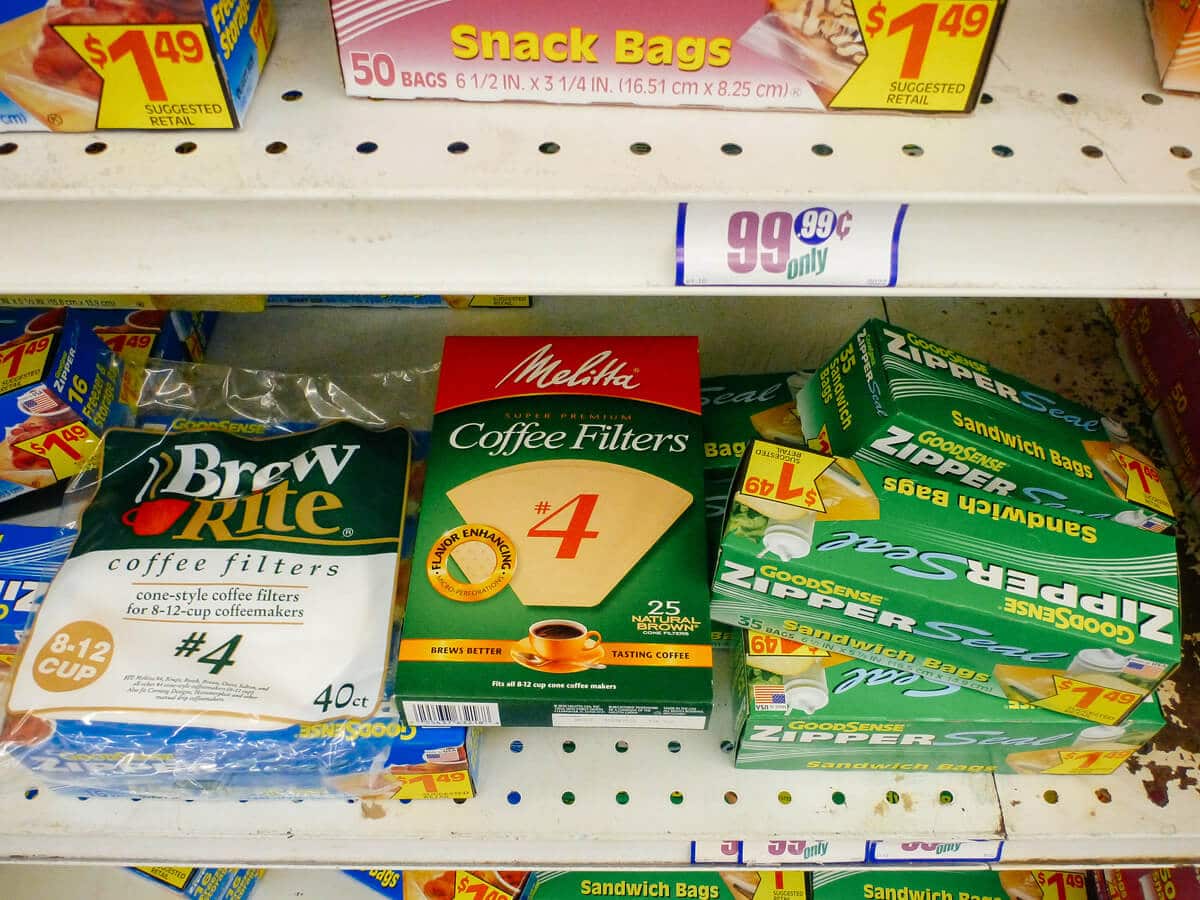
Dollar store deal: Zip-top bags and coffee filters
If you plan to start your seeds using the coffee filter (baggie) method, both of your supplies can be found in the same aisle.
Cheap zip-top bags are also handy for storing seeds that you’ve saved, among a hundred other uses around the house.
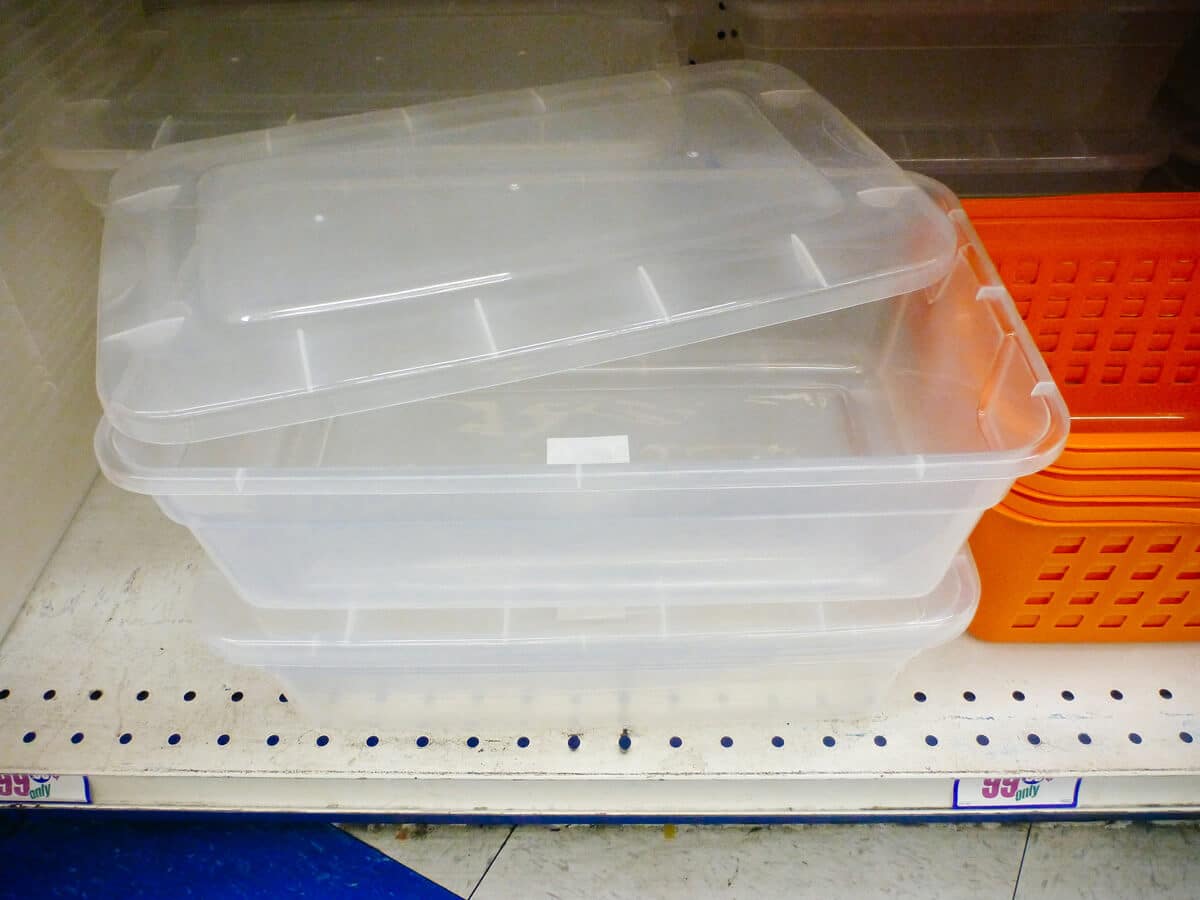
Dollar store deal: Plastic bin for seed storage
This is a great score from the dollar store. You can keep all your seed packets organized in this covered container, and store your plant markers, clips and ties, extra bags and coffee filters, and other supplies in a second one.
If you’re a seed hoarder like I am, you can take it one step further and categorize your seeds by bin.
For example, all your nightshades in the first bin, legumes in the second bin, squash and melons in the third, herbs and flowers in the fourth (and so on). Or if your seed collection is smaller, you can store all warm-season seeds in one bin and cool-season seeds in another bin.
When it’s time to start seeds, all you have to do is grab a bin and go. (I talk more about good seed storage techniques in this article.)
Label the bins with a Sharpie and stack them on a shelf for quick, convenient access to all your seeds when it’s planting time.
I’m a fan of this method because the transparent bins make it easy to check at a glance what you may be running low on at the beginning of the season.
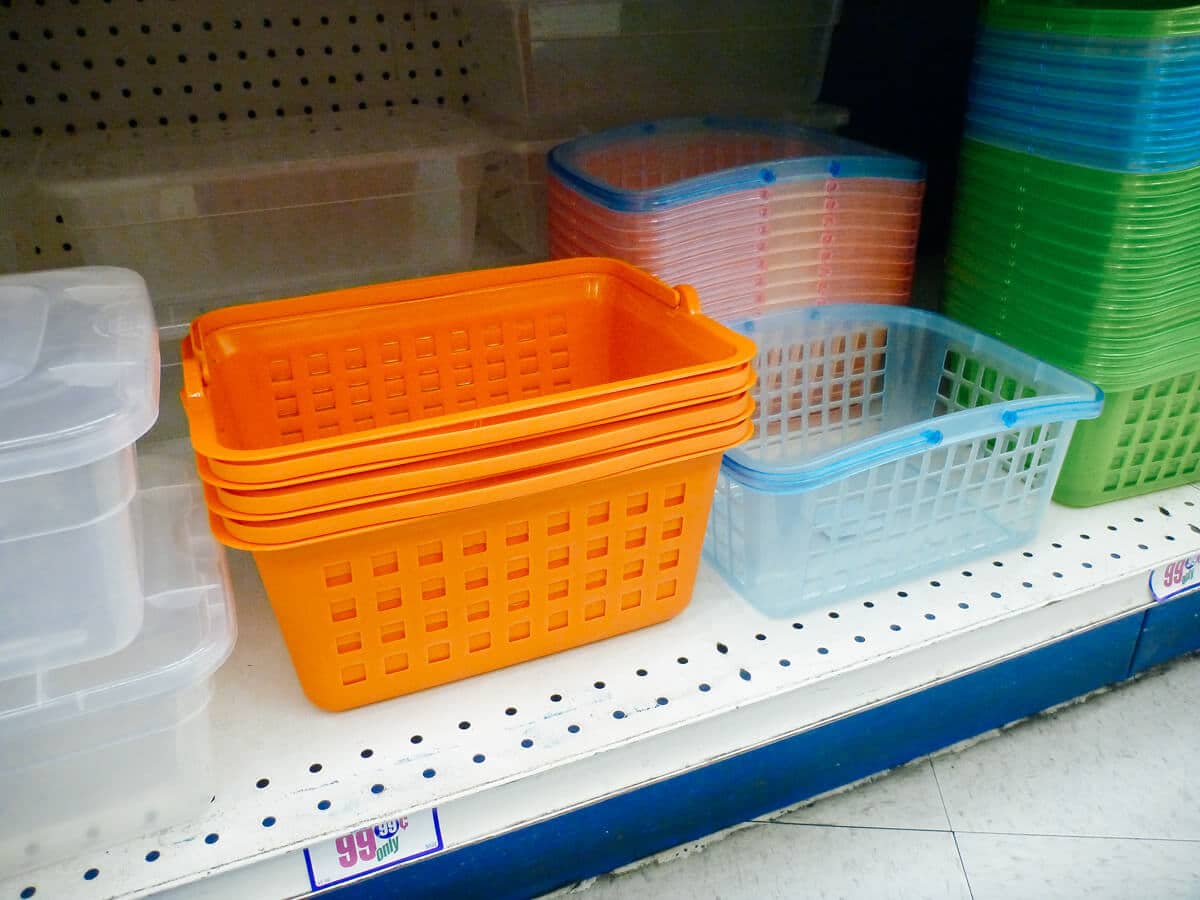
Dollar store deal: Storage caddy
I’ve found all kinds of caddies in the organization and kitchen aisles; these are the same baskets you might use to store toiletries.
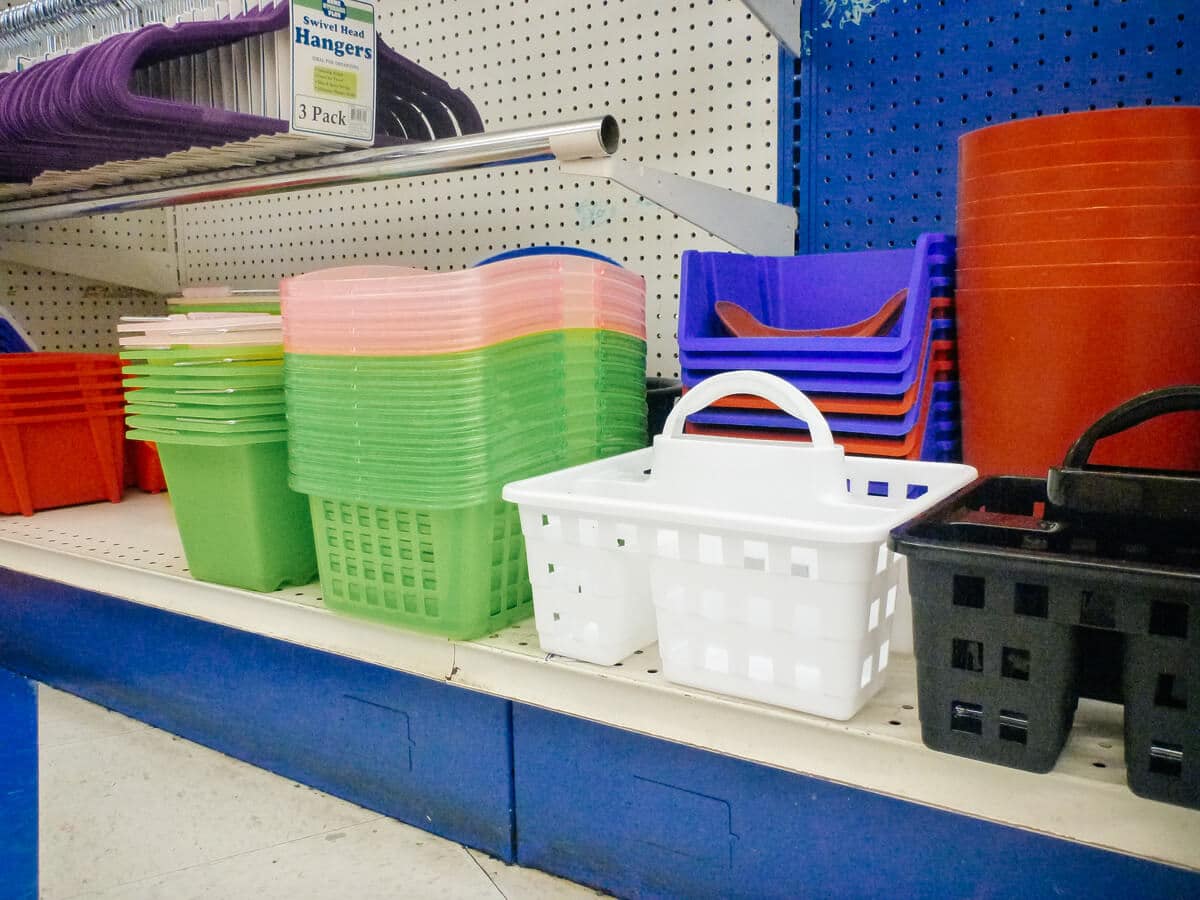
But for seed starting, they’re an excellent way to keep all your supplies organized in the closet, shed, or potting bench.
Think: hand tools in one caddy, plant markers and spray bottles in the next caddy, and gloves and twine in another.
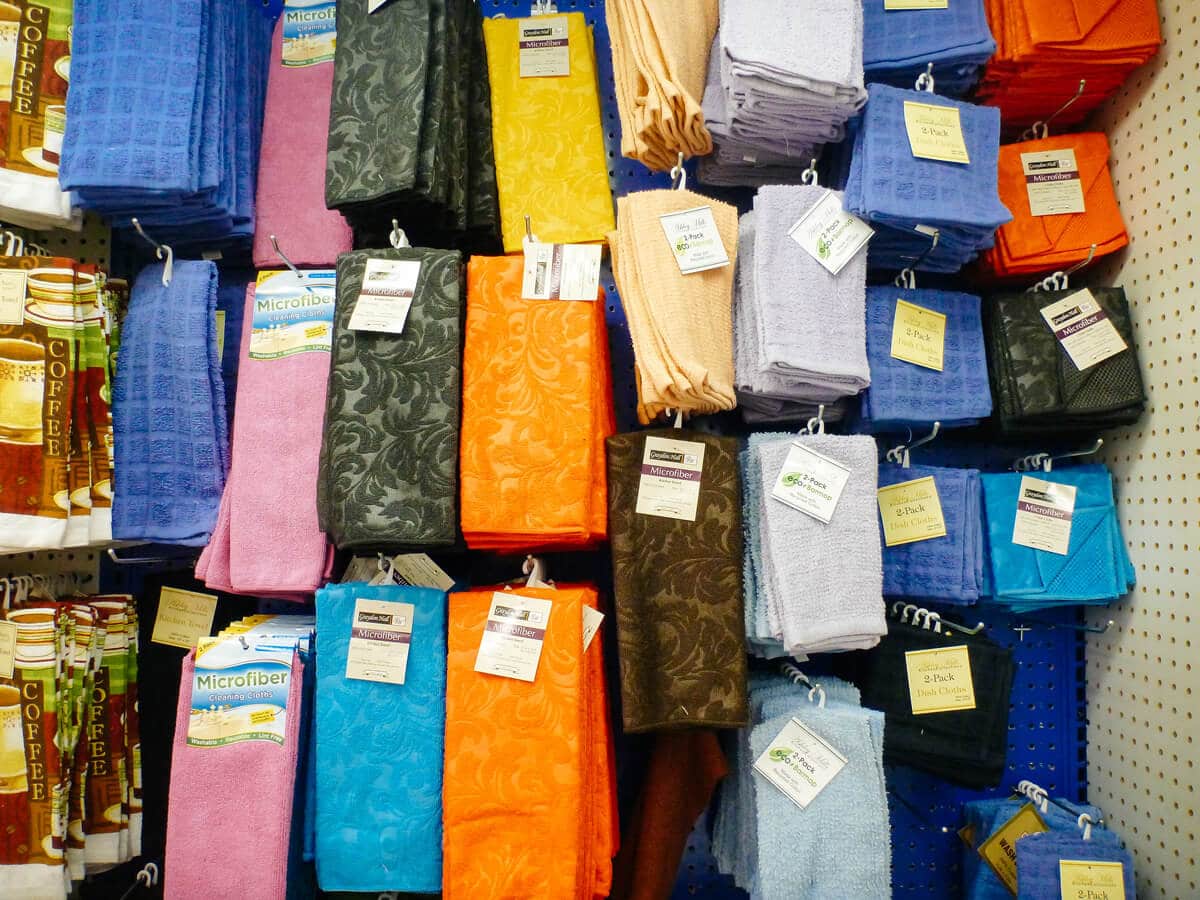
Dollar store deal: Dish towels
I stock up on dollar-store towels to use as cleaning rags. You really can’t go wrong with them for the price.
Related: DIY Tool Cleaning Station: The Fastest Way to Clean Garden Tools
If you know you’re going to be spending the whole day on your knees, digging in the dirt, fold up a few towels and place them under your knees for some cushion.
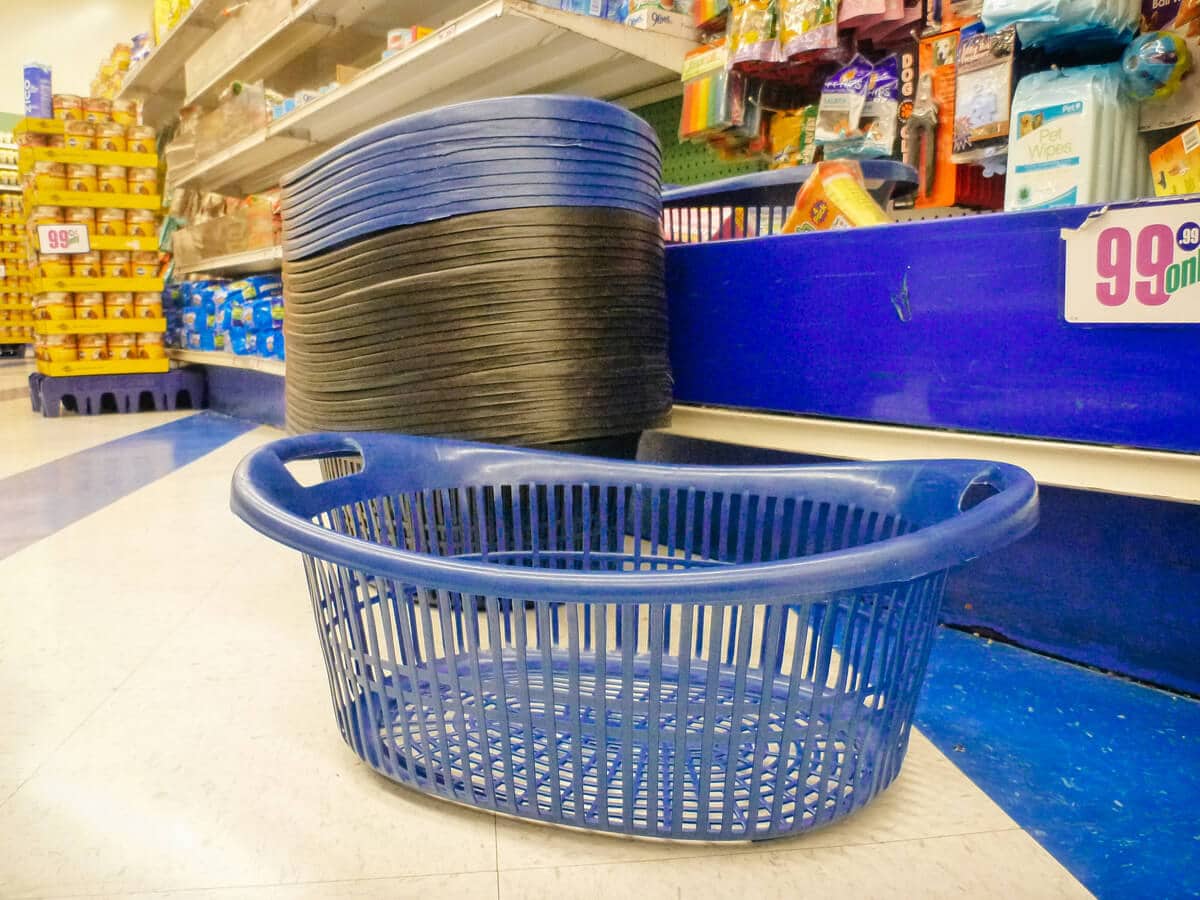
Dollar store deal: Plastic hamper
I assume this tiny hamper is intended for tiny loads of laundry (a few of my jeans would fill it to the top!), but it’s perfect for keeping all your gardening supplies together and tidy.
When your plants start producing, it’ll make an excellent harvest basket. You can also gather all your root vegetables in the basket and hose them off before bringing them inside the house.

Dollar store deal: Bucket
Store your soil, vermiculite, perlite, compost, and fertilizer in multiple buckets to mix and match as needed for your perfect potting mix.
You’ll find endless other uses for a bucket in the garden, like carrying bulbs, seed packets, small stakes, compost tea, mulch, and water from place to place.
In a pinch, you can also use buckets to cover seedlings and frost-sensitive plants if a cold snap is expected overnight. (Just remember to uncover them in the morning.)
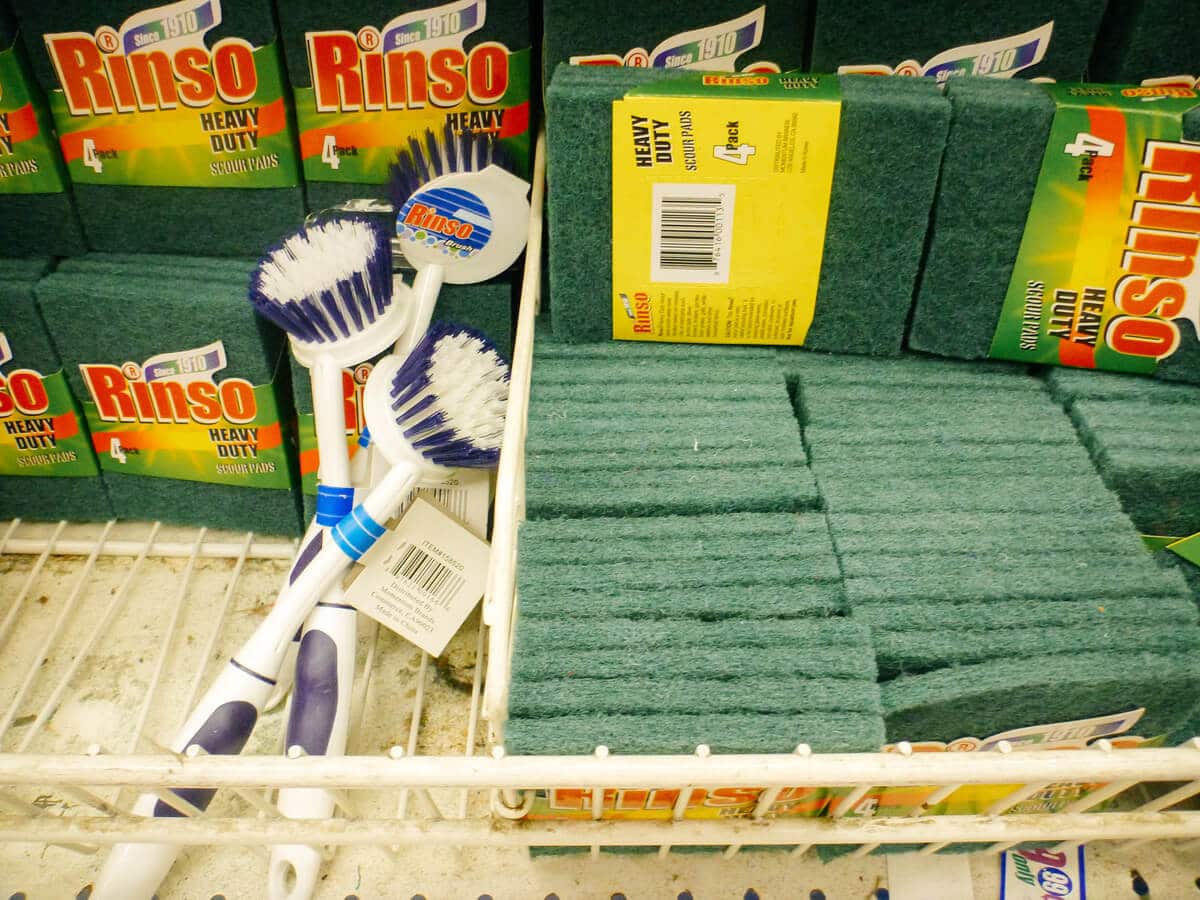
Dollar store deal: Cleaning supplies
I usually just shake out or hose off my pots between uses, but if you notice a lot of your seedlings dying from damping off or growing fungus on the soil, it’s a good idea to give your pots a more thorough cleaning with soap and hot water.
Read next: Why I Don’t Wash My Plant Pots (and You Don’t Need To Either)
Scrubbers and sponges are abundant at the dollar store, so you can keep a set especially for your garden to wipe off tools, clean your potting bench or utility sink, or scrub the dirt off root vegetables before you bring them inside.
This post updated from an article that originally appeared on February 19, 2014.
View the Web Story on best gardening supplies from the dollar store.


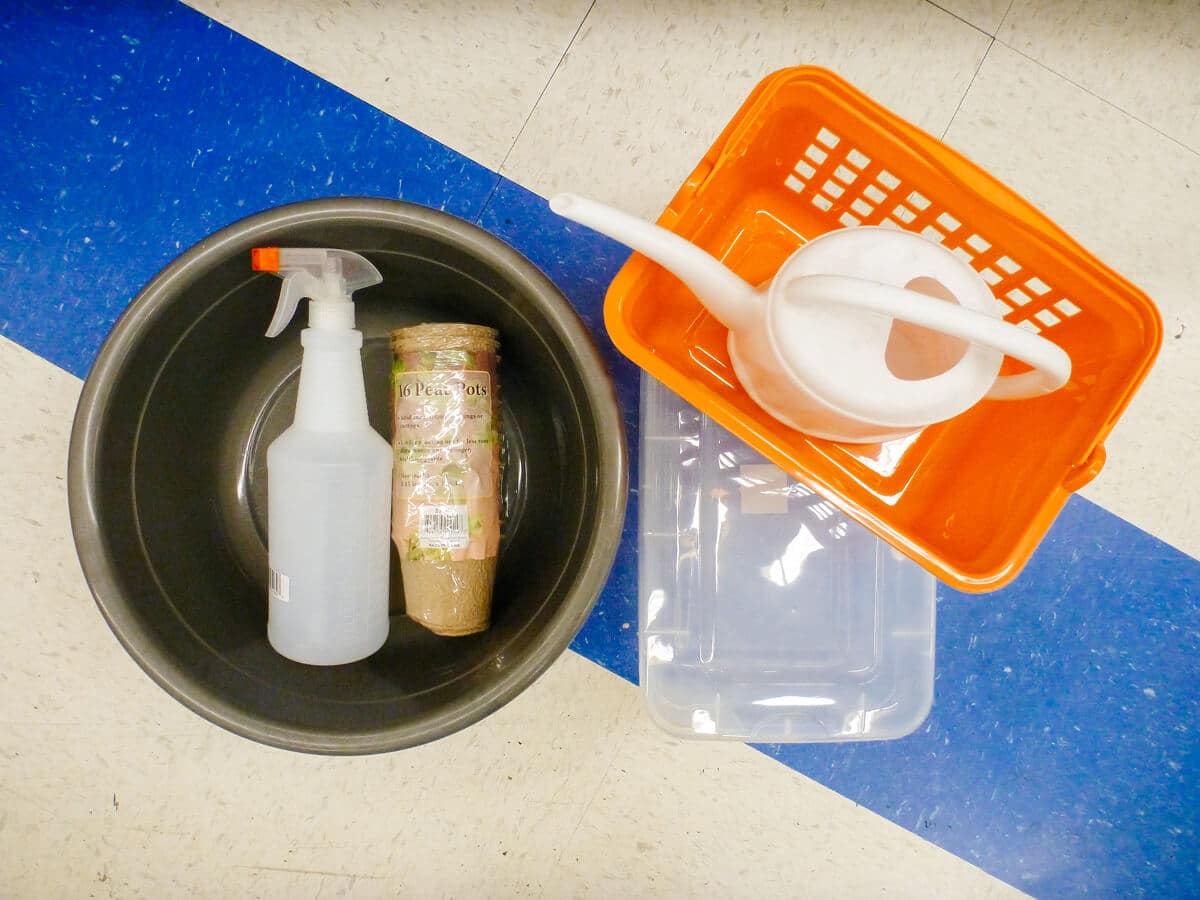













I’ve bought tons of seeds from dollar tree and have never once had them fail to produce. For 25 cents a package they are worth trying out. and I did and now I will never again pay for overpriced seeds again.
Such a great post for beginners and avid gardeners alike!
Great stuff. Thanks for sharing
Love it! I buy garden supplies there too. I really like using sport bottles for watering seedlings. It’s faster and easier than a spray bottle and very gentle.
Great idea! And I’ve actually been using an empty plastic water bottle to water my repotted tomato seedlings lately.
RT @cdnrockiesgirl: I <3 the dollar store RT @theGardenBetty: Seed Starting Supplies on the Cheap http://t.co/DTELg8fBS0
Angela Gann Beach liked this on Facebook.
Charlie Bourgeois liked this on Facebook.
Seed Starting Supplies on the Cheap: Scouring the Dollar Store http://t.co/iTSYhsj3SJ #gardenchat < TY for RT! @jchapstk
I <3 the dollar store RT @theGardenBetty: Do your shopping with pocket change. Seed Starting Supplies on the Cheap http://t.co/1I84Y1fhww
Do all your shopping with pocket change. Seed Starting Supplies on the Cheap: Scouring the Dollar Store http://t.co/DTELg8fBS0 #gardenchat
You may be surprised at what you can find. Seed Starting Supplies on the Cheap: Scouring the Dollar Store http://t.co/HNlGJzeLs6 #gardenchat
From rubber mats to cookie sheets… Seed Starting Supplies on the Cheap: Scouring the Dollar Store http://t.co/Iw6k7ozMSk #gardenchat
Georgette Howington liked this on Facebook.
Emily Andrews liked this on Facebook.
RT @theGardenBetty: The best stuff is NOT in the garden aisle. Seed Starting Supplies on the Cheap: Scouring the Dollar Store http://t.co/i…
The best stuff is NOT in the garden aisle. Seed Starting Supplies on the Cheap: Scouring the Dollar Store http://t.co/iTSYhsj3SJ #gardenchat
Saunya Amos liked this on Facebook.
RT @bg_garden: Seed Starting Supplies on the Cheap: Scouring the Dollar Store:
http://t.co/z6crAzb4Ia
RT @theGardenBetty: Get started with just a few dollahs! Seed Starting Supplies on the Cheap: Scouring the Dollar Store http://t.co/tXQ1h9A…
Get started with just a few dollahs! Seed Starting Supplies on the Cheap: Scouring the Dollar Store http://t.co/tXQ1h9A0zO #gardenchat
Jill Feenstra liked this on Facebook.
Amanda Bartel Perez liked this on Facebook.
Rebekah Powell liked this on Facebook.
great post! i love the baking sheets and clothes pin ideas.
Jenn Daniel liked this on Facebook.
Leah Eddy liked this on Facebook.
Kelly Dugan Guerin liked this on Facebook.
Lydia Ann liked this on Facebook.
Diana Heffernan-Schrader liked this on Facebook.
Jacob Knight liked this on Facebook.
Amber Snow liked this on Facebook.
Great post! I’ll be stopping by the dollar store on the way home 🙂
Jodi Anderson liked this on Facebook.
RT @BG_garden: Seed Starting Supplies on the Cheap: Scouring the Dollar Store:
I have a confession: I’m a dollar store junki… http://t.c…
Seed Starting Supplies on the Cheap: Scouring the Dollar Store:
I have a confession: I’m a dollar store junki… http://t.co/z8rmPjXm5x
Blogged on Garden Betty: Seed Starting Supplies on the Cheap: Scouring the Dollar Store http://t.co/68P8F2ivGM